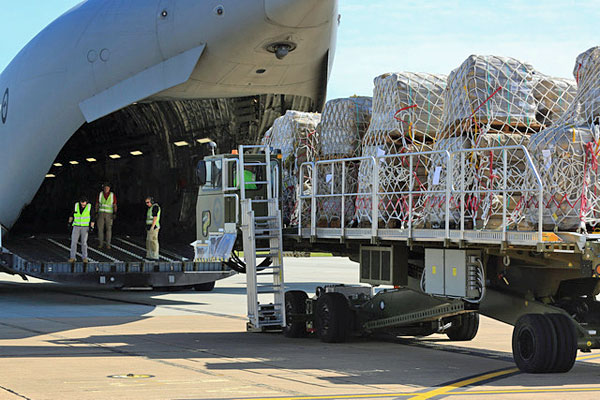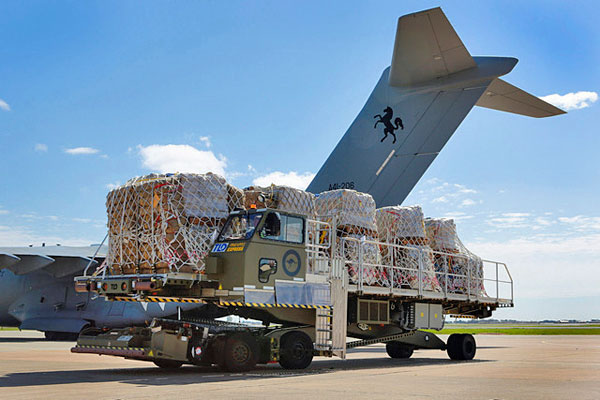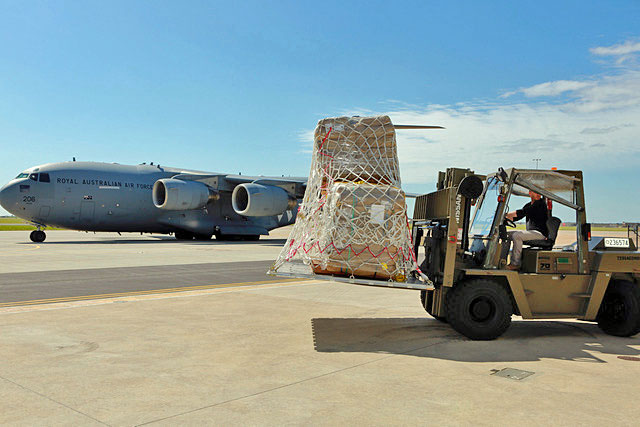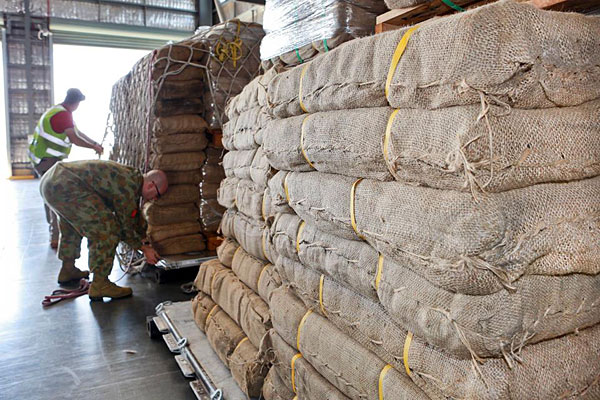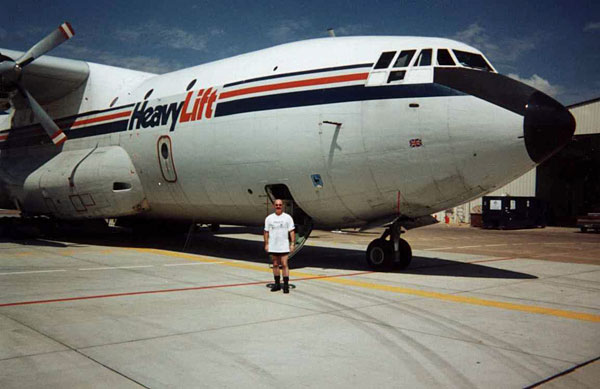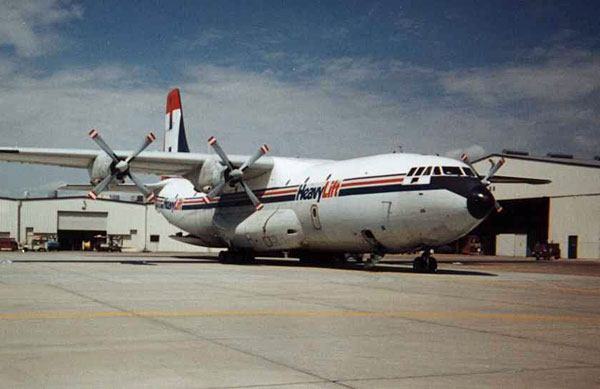
AMS Brize Norton Gets a Badge
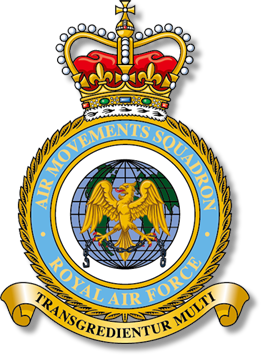
AMS Brize Norton was officially presented with a badge by the Head of Establishment at Brize on 6 October.
AMS wished to symbolise its functions by adopting as its badge a terrestrial globe and an eagle holding in its claws a chain.
The inspiration for the badge design is drawn from two original RAF Movement Units (No 1 & No 41) established in the 1920s. The last of these units was disbanded in 1964, one year before the creation of Air Movements Squadron at RAF Brize Norton. The badge symbolism is reflective of the role of the Air Movements Squadron as a key enabler for the Defence Gateway to Operations.
The eagle and globe represent an air dominated global transport hub with the chain representative of the restraint utilised for cargo on transport aircraft. The motto 'Transgredientur MuIti'- 'Many shall pass through' captures the principal purpose of the Squadron in the movement of personnel across the globe. The motto being a modified version of the No 41 Movement Units badge motto 'Transibunt Multi'.
Al Stacey
AMS wished to symbolise its functions by adopting as its badge a terrestrial globe and an eagle holding in its claws a chain.
The inspiration for the badge design is drawn from two original RAF Movement Units (No 1 & No 41) established in the 1920s. The last of these units was disbanded in 1964, one year before the creation of Air Movements Squadron at RAF Brize Norton. The badge symbolism is reflective of the role of the Air Movements Squadron as a key enabler for the Defence Gateway to Operations.
The eagle and globe represent an air dominated global transport hub with the chain representative of the restraint utilised for cargo on transport aircraft. The motto 'Transgredientur MuIti'- 'Many shall pass through' captures the principal purpose of the Squadron in the movement of personnel across the globe. The motto being a modified version of the No 41 Movement Units badge motto 'Transibunt Multi'.
Al Stacey
From: David King, Bury St Edmunds, Suffolk
Subject: The Duty Free Run
While at RAF Nicosia in 1958, I had a Loadie as a neighbour. He told me that on routine runs to Aden in a Beverley they would take a shopping list for Japanese electronic goods.
To avoid customs on the return they put all the goodies into the large empty space under the Elson toilet. On arrival back at Nicosia, no Customs Officer ever moved the nearly-full Elson to see if there was anything under it!
David King
Subject: The Duty Free Run
While at RAF Nicosia in 1958, I had a Loadie as a neighbour. He told me that on routine runs to Aden in a Beverley they would take a shopping list for Japanese electronic goods.
To avoid customs on the return they put all the goodies into the large empty space under the Elson toilet. On arrival back at Nicosia, no Customs Officer ever moved the nearly-full Elson to see if there was anything under it!
David King
From: Andrew Spinks, Dubai
Subject: Re: UKMAMS OBA OBB #093016
Hi Tony,
Thanks again for a great read. It was shocking to read about the 'restraint' on the CF6 engine and a timely reminder that the TDS (and our ad hoc calculations when down route) were not in vain.
David Stevens set a bit of a challenge about official 1,000 mph Club membership. I doubt there are too many of us but I am also one. I was flown in a Lightning T5 while OC SCAF at Binbrook in 1982. Wg Cdr Norman Want (OC Ops), a real gentleman, was the pilot and he asked what I wanted to do during the flight. I asked to fly at over 1,000 mph and he said that would be boring but fine by him. I also take my hat off to him because he gave me one of the few fast-jet trips during which I did not actually part with my breakfast. I also flew at over 1,000 mph on Concorde to New York - but I accept that doesn't count.
Subject: Re: UKMAMS OBA OBB #093016
Hi Tony,
Thanks again for a great read. It was shocking to read about the 'restraint' on the CF6 engine and a timely reminder that the TDS (and our ad hoc calculations when down route) were not in vain.
David Stevens set a bit of a challenge about official 1,000 mph Club membership. I doubt there are too many of us but I am also one. I was flown in a Lightning T5 while OC SCAF at Binbrook in 1982. Wg Cdr Norman Want (OC Ops), a real gentleman, was the pilot and he asked what I wanted to do during the flight. I asked to fly at over 1,000 mph and he said that would be boring but fine by him. I also take my hat off to him because he gave me one of the few fast-jet trips during which I did not actually part with my breakfast. I also flew at over 1,000 mph on Concorde to New York - but I accept that doesn't count.
And a water jump? No, but some of us who have served on TSW over the years have done slightly more by passing the Basic Parachute Course to support an operational fuel drop role, and been awarded our parachute wings. I very proudly wore the wings for the second half of my 37 years service.
All the best to everyone,
Andy
All the best to everyone,
Andy
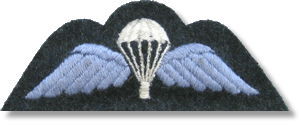
Tickets Go on Sale for 80th Anniversary Air Tattoo
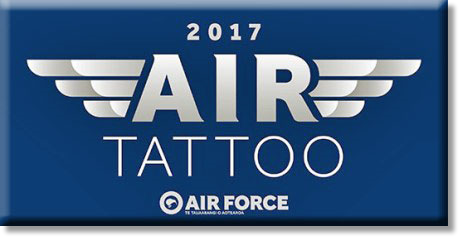
Tickets for the highly anticipated Royal New Zealand Air Force’s 80th Anniversary Air Tattoo went on sale on 18 October. The 2017 Air Tattoo, on 25 and 26 February at RNZAF Base Ohakea, will showcase the RNZAF’s latest air capability, alongside long-serving favourites and guest aircraft from international militaries. The newly formed Black Falcons aerobatics team will also take to the skies to thrill the crowd.
Deputy Chief of Air Force, Air Commodore Mark Brunton, said this was a rare opportunity for the public to get up close to its Air Force and he hoped people would take the opportunity to come and see it in action. “We want this to be a great day out for everyone and we are excited to be able to show off our Air Force to the public during our 80th anniversary year, so people can see the valuable job we do and meet the highly trained people who do it.”
Deputy Chief of Air Force, Air Commodore Mark Brunton, said this was a rare opportunity for the public to get up close to its Air Force and he hoped people would take the opportunity to come and see it in action. “We want this to be a great day out for everyone and we are excited to be able to show off our Air Force to the public during our 80th anniversary year, so people can see the valuable job we do and meet the highly trained people who do it.”
With the 75th anniversary air show in 2012 drawing such a large crowd it has been decided to offer a two-day event to cater for the large number of people expected. RNZAF Base Ohakea Commander Group Captain Nick Olney said to address some of the traffic-management issues from the previous event tickets would be limited, there would be no gate sales, and park-and-ride options would be available.
“We’re looking forward to hosting a huge crowd here and a lot of planning is going in to the event to help everyone who attends have a great time,” GPCAPT Olney said.
Tickets are available from Ticketek: Adults $35, Children 5-16 $10, younger than 5 free.
Scoop Media
“We’re looking forward to hosting a huge crowd here and a lot of planning is going in to the event to help everyone who attends have a great time,” GPCAPT Olney said.
Tickets are available from Ticketek: Adults $35, Children 5-16 $10, younger than 5 free.
Scoop Media
Exercise Bullseye - All Four Air Forces
An Australian C-130J drops its 10-container cargo load over Trenton
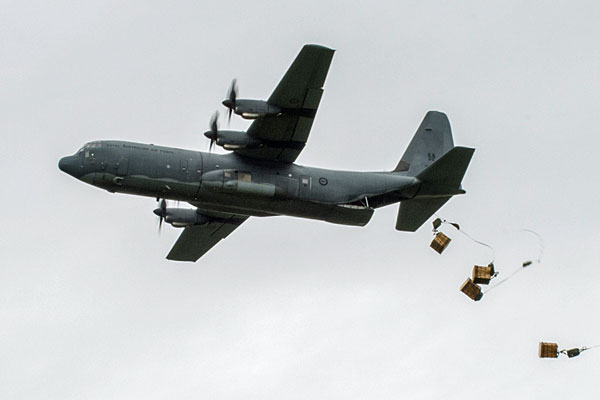
A British C-130J drops its 10-container cargo load over Trenton
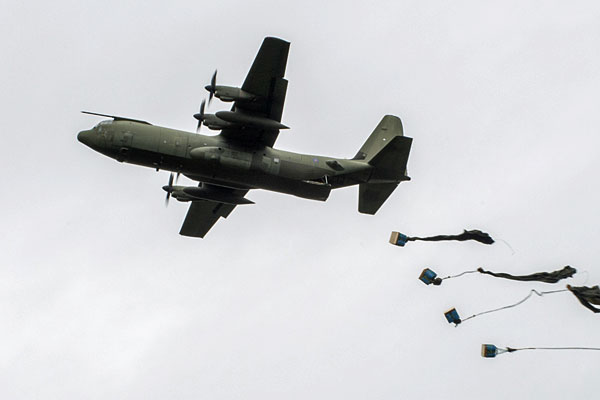
Sgt Kris Evong, assistant to the jumpmaster, helps CAF personnel
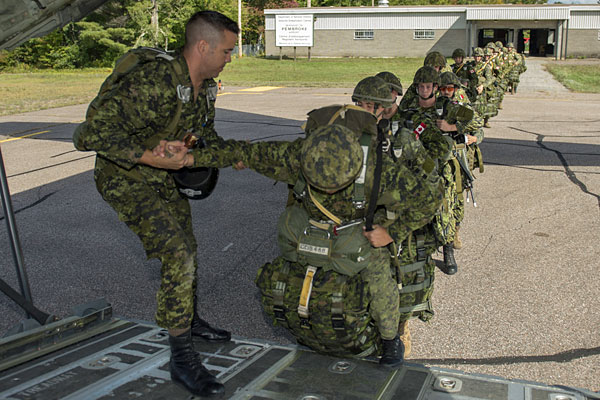
CAF personnel prepare for a parachute jump from a CC-130J
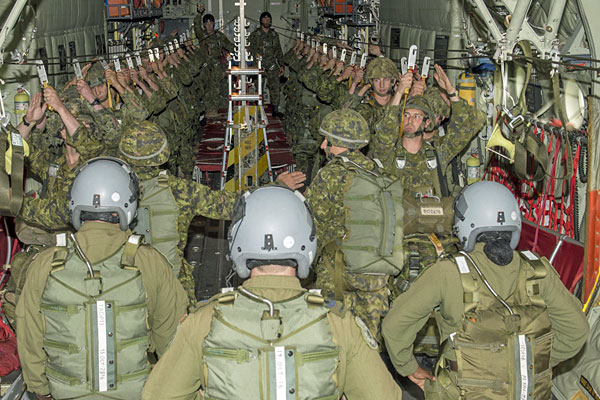
CAF personnel prepare for a parachute jump from a CC-130J
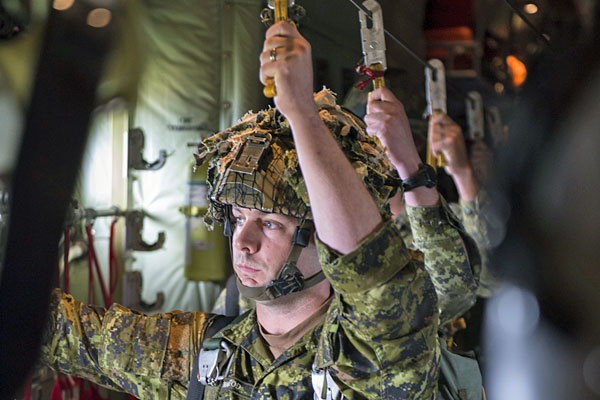
CAF personnel jump from a CC-130J
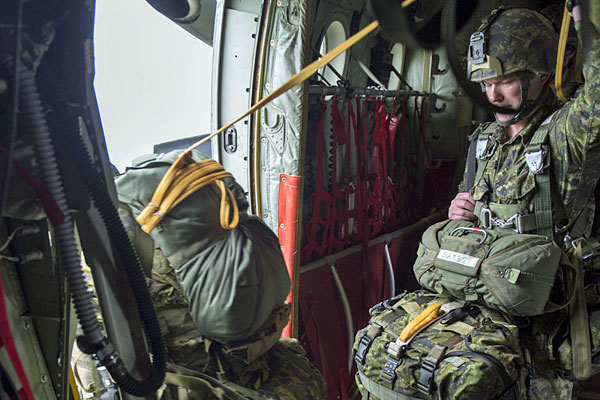
CAF Corporal Julien Simard, Loadmaster, doing his thing
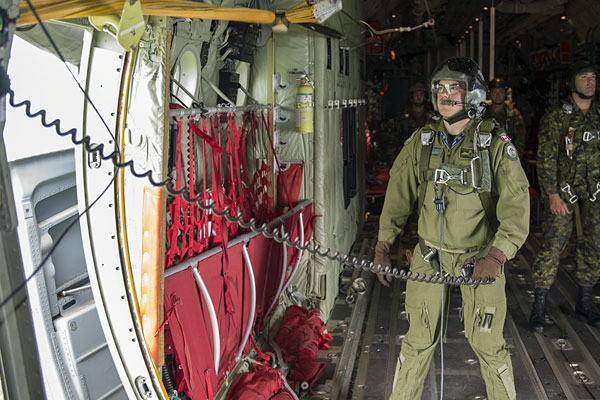
C-130 Hercules crews from Australia, Canada, New Zealand and the United Kingdom trained together and engaged in friendly competition in the skies during Exercise Bullseye, a tactical air transport exercise that wrapped up at 8 Wing Trenton, Ontario, on September 30, 2016.
The exercise ran from September 26 to 30 and provided members of the Royal Air Force, Royal Australian Air Force, Royal New Zealand Air Force (as observers) and the Royal Canadian Air Force a unique and collaborative learning opportunity for the tactical operation of the C-130J Hercules transport aircraft.
Exercise Bullseye was an annual exercise from 1975 to 1999, but entered a hiatus while exercise participants transitioned to the new J-model Hercules from the older H-model.
“It was a great honour to host our Commonwealth partner-nations for the first international Exercise Bullseye to be held since the C-130J Hercules began joining our respective fleets,” said Colonel Colin Keiver, the commander of 8 Wing. “This year’s exercise was a fantastic opportunity to exercise and showcase the capabilities of this great airframe, its aircrews and its maintainers.”
The exercise ran from September 26 to 30 and provided members of the Royal Air Force, Royal Australian Air Force, Royal New Zealand Air Force (as observers) and the Royal Canadian Air Force a unique and collaborative learning opportunity for the tactical operation of the C-130J Hercules transport aircraft.
Exercise Bullseye was an annual exercise from 1975 to 1999, but entered a hiatus while exercise participants transitioned to the new J-model Hercules from the older H-model.
“It was a great honour to host our Commonwealth partner-nations for the first international Exercise Bullseye to be held since the C-130J Hercules began joining our respective fleets,” said Colonel Colin Keiver, the commander of 8 Wing. “This year’s exercise was a fantastic opportunity to exercise and showcase the capabilities of this great airframe, its aircrews and its maintainers.”
The C-130J Hercules (designated CC-130J by Canada) is a four-engine, fixed-wing turboprop aircraft that can carry up to 92 combat troops or 128 non-combat passengers. It is used for a wide range of missions, including troop transport, tactical airlift (both palletized and vehicular cargo) and airborne operations. Highlighting the versatility of this aircraft, crews often train to drop cargo by parachute in order to supply military or humanitarian cargo to areas inaccessible by land.
While the exercise enhanced the readiness of participating members, there was also some friendly competition built into the training. The exercise culminated with a tactical air training portion, where participating nations attempted to hit the “bullseye” with a parachute-rigged cargo box. The RCAF, which was closest to the mark, took home the Exercise Bullseye trophy.
“436 Transport Squadron was proud to participate in this year’s international Exercise Bullseye,” said Lieutenant-Colonel Spencer Selhi, the commanding officer of 436 Transport Squadron. “As the commanding officer of the RCAF’s CC-130J Hercules squadron, I know our crews of highly-skilled and enthusiastic airmen and airwomen represented Canada well. More importantly, I know all participants came away from this exercise with a shared appreciation of each other’s skills and tactics.”
The Royal Canadian Air Force has flown the CC-130J Hercules, since 2010. While on the outside the CC-130J looks almost identical to the older Hercules, internally the J-model Hercules is essentially a completely new aircraft. The new "Hercs" fly faster, higher and farther, and they carry heavier loads while burning less fuel.
Lifted from Facebook
While the exercise enhanced the readiness of participating members, there was also some friendly competition built into the training. The exercise culminated with a tactical air training portion, where participating nations attempted to hit the “bullseye” with a parachute-rigged cargo box. The RCAF, which was closest to the mark, took home the Exercise Bullseye trophy.
“436 Transport Squadron was proud to participate in this year’s international Exercise Bullseye,” said Lieutenant-Colonel Spencer Selhi, the commanding officer of 436 Transport Squadron. “As the commanding officer of the RCAF’s CC-130J Hercules squadron, I know our crews of highly-skilled and enthusiastic airmen and airwomen represented Canada well. More importantly, I know all participants came away from this exercise with a shared appreciation of each other’s skills and tactics.”
The Royal Canadian Air Force has flown the CC-130J Hercules, since 2010. While on the outside the CC-130J looks almost identical to the older Hercules, internally the J-model Hercules is essentially a completely new aircraft. The new "Hercs" fly faster, higher and farther, and they carry heavier loads while burning less fuel.
Lifted from Facebook
Exercise Bullseye - All Four Air Forces
From: Andrew Downard, Ballarat VIC
Subject: RE: UKMAMS OBA OBB #093016
Hi Tony,
I was reading Phil Smith’s rant about Masirah, how everyone was grumpy, which triggered a memory from the Gulf in 1970.
That condition of a lack of happiness and discontent was known then as “Having a Monk On”. It then led me to wonder how long that phrase lasted and what other ‘slang’ terms have been and gone over the years. For instance does the ‘Pan Team’ today shout “Two Six!” when they are shifting a large bit of kit? (I was told that this came from the Form 26 “Permission to Move Equipment” - probably just a story like non-adhesive glue and tartan paint.)
Perhaps we should start to make a list of the phrases we remember before the brain cells completely fade away (probably due to the heavy drinking Phil mentions). Happy to contribute to putting this together.
Andy
p.s. I was in Cyprus when the Marisah lot came through after the close-down, they seemed pretty cheerful to me ;-)
Subject: RE: UKMAMS OBA OBB #093016
Hi Tony,
I was reading Phil Smith’s rant about Masirah, how everyone was grumpy, which triggered a memory from the Gulf in 1970.
That condition of a lack of happiness and discontent was known then as “Having a Monk On”. It then led me to wonder how long that phrase lasted and what other ‘slang’ terms have been and gone over the years. For instance does the ‘Pan Team’ today shout “Two Six!” when they are shifting a large bit of kit? (I was told that this came from the Form 26 “Permission to Move Equipment” - probably just a story like non-adhesive glue and tartan paint.)
Perhaps we should start to make a list of the phrases we remember before the brain cells completely fade away (probably due to the heavy drinking Phil mentions). Happy to contribute to putting this together.
Andy
p.s. I was in Cyprus when the Marisah lot came through after the close-down, they seemed pretty cheerful to me ;-)
There was a comprehensive listing of WWII Air Force slang and terminology published in the OBA Briefs commencing in November 2009:
Part A-F: http://ukmamsoba.org/obb111309.htm
Part G-L: http://ukmamsoba.org/obb121209.htm
Part M-R: http://ukmamsoba.org/obb122209.htm
Part S-Z: http://ukmamsoba.org/obb011510.htm
Part A-F: http://ukmamsoba.org/obb111309.htm
Part G-L: http://ukmamsoba.org/obb121209.htm
Part M-R: http://ukmamsoba.org/obb122209.htm
Part S-Z: http://ukmamsoba.org/obb011510.htm
From: Andrew Finlayson, Adelaide, SA
Subject: Where are they now?
I did have a story of legendary status to tell of picking up the squadron Christmas DF booze from Lajes, aborted foggy landings at Lyneham, diversion to St Mawgan, rummage crews arriving from Torquay, escapes through the English countryside (think 39 Steps). Hair raising stuff, well for me anyway. It’ll keep though for some other newsletter.
I also did an Aldergrove off-base handling expedition on a couple of occasions. Wasn’t fortunate (or smart?) enough to win the duty free but I went on those occasions with a good friend Cpl ‘Chick’ Hatch whom I couldn’t drink with in the mess of the 17th / 21st Lancers so we went to wet our whistles in the local pubs. Not very smart was it? When you think back…
I would, however love to know where he is now. Just to “pull up a sandbag and swing the lamp” with him. There was just the two of us who joined the Aldergrove Supply Sqn to help rotate army groups in and out of Northern Ireland. One fork lift, a Sqn Leader and a Flt Sgt the only resources. They were for some reason deemed insufficient for this task. Well it was the only operational base in the world at the time. I wrote a report on it after the first trip. I’m sure it’s still filed away somewhere never to be read.
All the best,
Andrew
Subject: Where are they now?
I did have a story of legendary status to tell of picking up the squadron Christmas DF booze from Lajes, aborted foggy landings at Lyneham, diversion to St Mawgan, rummage crews arriving from Torquay, escapes through the English countryside (think 39 Steps). Hair raising stuff, well for me anyway. It’ll keep though for some other newsletter.
I also did an Aldergrove off-base handling expedition on a couple of occasions. Wasn’t fortunate (or smart?) enough to win the duty free but I went on those occasions with a good friend Cpl ‘Chick’ Hatch whom I couldn’t drink with in the mess of the 17th / 21st Lancers so we went to wet our whistles in the local pubs. Not very smart was it? When you think back…
I would, however love to know where he is now. Just to “pull up a sandbag and swing the lamp” with him. There was just the two of us who joined the Aldergrove Supply Sqn to help rotate army groups in and out of Northern Ireland. One fork lift, a Sqn Leader and a Flt Sgt the only resources. They were for some reason deemed insufficient for this task. Well it was the only operational base in the world at the time. I wrote a report on it after the first trip. I’m sure it’s still filed away somewhere never to be read.
All the best,
Andrew
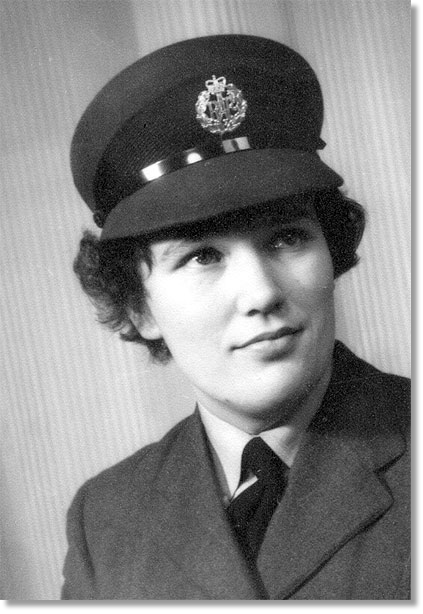
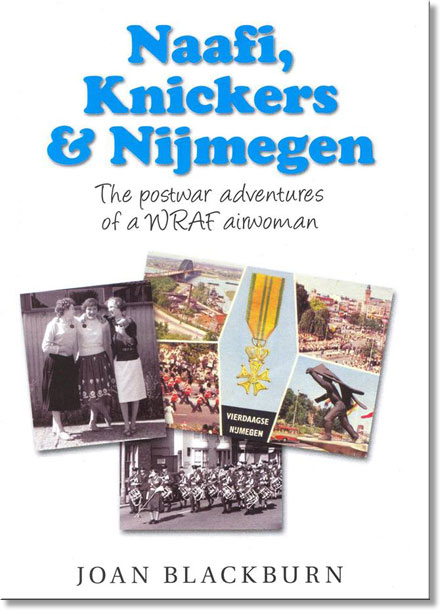
Naafi, Knickers and Nijmegen: The Postwar Adventures of a WRAF Airwoman
This is the first book by Joan Blackburn, and what a wonderful book it is. She has given an accurate description of her experiences in the WRAF which relates in common to both sexes of all three services, where readers can picture the scenes vividly of life in the Forces after World War Two up to the late 60's.
Ex servicemen and women will find this book a very enjoyable one, with many amusing moments that can be personally related to the reader. To those who have had not served in the forces and those of the younger generations will soon be able to recognize how a bond is formed quickly with fellow recruits from different backgrounds and regions of the country, from which life friendships are made as well. They also will find plenty to laugh at, as well as seeing what life was like in uniform during that tense political period.
A very well written book full of funny anecdotes on every page - available on Amazon
Ex servicemen and women will find this book a very enjoyable one, with many amusing moments that can be personally related to the reader. To those who have had not served in the forces and those of the younger generations will soon be able to recognize how a bond is formed quickly with fellow recruits from different backgrounds and regions of the country, from which life friendships are made as well. They also will find plenty to laugh at, as well as seeing what life was like in uniform during that tense political period.
A very well written book full of funny anecdotes on every page - available on Amazon
Naafi, Knickers and Nijmegen:
The Postwar Adventures of a WRAF Airwoman
The Postwar Adventures of a WRAF Airwoman
From: David Sheen, Amberley, QLD
Subject: South Australian Flood Relief
Subject: South Australian Flood Relief
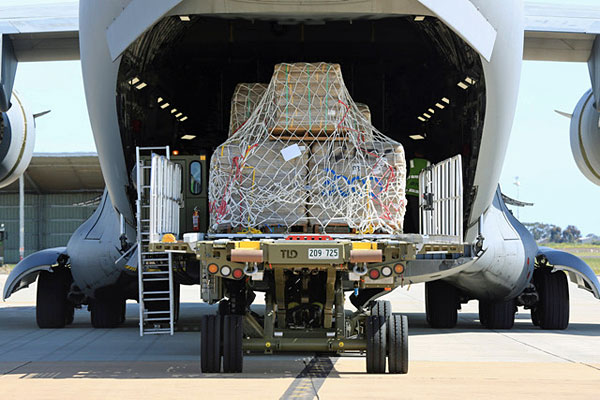
Hi Tony,
The Australian Defence Force is providing support to the South Australian flood relief effort through the delivery of an additional 60,000 sandbags.
Defence has already provided 40,000 sandbags, personnel from the Australian Army’s 7th Battalion, Royal Australian Regiment and personnel from the Royal Australian Air Force's Number 3 Security Forces Squadron and Air Warfare Centre to aid in ground transport and filling sandbags.
Cheers,
Sheeny
The Australian Defence Force is providing support to the South Australian flood relief effort through the delivery of an additional 60,000 sandbags.
Defence has already provided 40,000 sandbags, personnel from the Australian Army’s 7th Battalion, Royal Australian Regiment and personnel from the Royal Australian Air Force's Number 3 Security Forces Squadron and Air Warfare Centre to aid in ground transport and filling sandbags.
Cheers,
Sheeny
From: David Powell, Princes Risborough
Subject: Swan Song
Hi Tony,
I couldn't resist chipping in on this one! - ‘Swan Songs’
My first offering for a ‘Swan Song Saga’ is about the last time I put on RAF uniform. This was in May 1993, a couple of months before my last commute home from working in the RAF Log Ops office in the MoD Main Building. The background was the NATO Operation Deny Flight, the enforcement of a United Nations no-fly zone over Bosnia and Herzegovina which had begun on 12 April 1993. At very short notice, a logistics coordination meeting was called at the Allied Forces South NATO Headquarters in May 1993, and I went as the UK RAF rep. Because of the perceived importance of the meeting it was being opened by Admiral Crowe, the AFSouth NATO Commander. That meant turning up in my No 1 blue uniform. As MoD working rig was suit and rolled umbrella, I knew that, as it turned out, this would probably be my last day in uniform. I should also explain that as the conference was a last minute affair, the only large room available was in the Headquarters Social Club. What made the occasion particularly memorable was thinking, as the conference opened, ‘Funny old world, no one told me when I first put on RAF uniform some 32 years previously that the last time I was to wear it would be under the glitter ball on the dance floor in a NATO NAAFI in Naples!’
Subject: Swan Song
Hi Tony,
I couldn't resist chipping in on this one! - ‘Swan Songs’
My first offering for a ‘Swan Song Saga’ is about the last time I put on RAF uniform. This was in May 1993, a couple of months before my last commute home from working in the RAF Log Ops office in the MoD Main Building. The background was the NATO Operation Deny Flight, the enforcement of a United Nations no-fly zone over Bosnia and Herzegovina which had begun on 12 April 1993. At very short notice, a logistics coordination meeting was called at the Allied Forces South NATO Headquarters in May 1993, and I went as the UK RAF rep. Because of the perceived importance of the meeting it was being opened by Admiral Crowe, the AFSouth NATO Commander. That meant turning up in my No 1 blue uniform. As MoD working rig was suit and rolled umbrella, I knew that, as it turned out, this would probably be my last day in uniform. I should also explain that as the conference was a last minute affair, the only large room available was in the Headquarters Social Club. What made the occasion particularly memorable was thinking, as the conference opened, ‘Funny old world, no one told me when I first put on RAF uniform some 32 years previously that the last time I was to wear it would be under the glitter ball on the dance floor in a NATO NAAFI in Naples!’
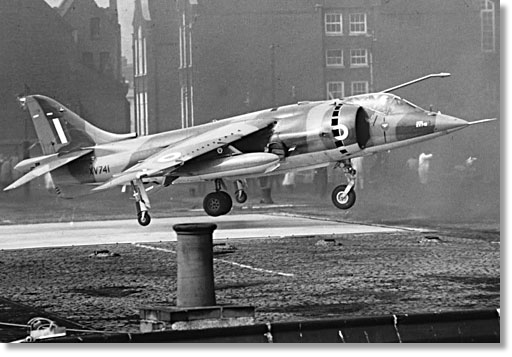
My UKMAMS Swan Song was also memorable. As my farewell ‘treat’ F team were tasked with handling the positioning in New York of ground equipment and spares packs for the RAF and RN participants in the May 1969 50th Anniversary Daily Mail Air Race between The Empire State Building and London’s Post Office Tower. The RN used Phantoms which flew between the Floyd Bennet Naval Air Station and Wisley Aerodrome. The RAF used the event to show off Harriers between the quayside of the Bristol Basin in New York and a coal yard next to St Pancras station in London. Two 47 year old memories are: bumping into the boss of 1 Sqn while wearing a navy blue civilian car coat (with my Fg Off rank tabs slipped on to the convenient shoulder straps) with my uniform. Well it had been raining and it was my only rain coat. On being challenged ‘Haven’t seen one of those before?’ the first thing I could think of was ‘MAMS undertaking new issue field trials Sir!’ To this the Wg Cdr commented - ‘’Jolly Good! Must get our stores to get one for me!’ The other memory was being across at Floyd Bennet Naval Air Station with some quite hairy US Navy pilots, many with Viet Nam combat experience, when the first positioning Harrier arrived. They had never seen a Harrier before. Needless to say the pilot did the typical Harrier ‘It’s me!’ arrival by screeching to a stop at 40ft, turn to face the crowd, bow and land. Comments such as ‘Did I just see that!’ is the polite version.
My final memorable Swan Song was being the penultimate person (the last was the last station commander Group Captain Simmons) to board the Belfast we had just loaded and which was the very last aircraft to depart from RAF Sharjah. This was just before Christmas 1971. This was not just the end of an era in RAF history but the end of Gulf MAMF and my last task and trim sheet as a real mover.
Keep safe
David Powell F Team 1967-69
Keep safe
David Powell F Team 1967-69
Top 10 Largest Air Forces in the World
When the British Royal Flying Corps was created in 1912, the force consisted of nothing more than a few crude aircraft with an accompanying number of balloons. During World War one the force was mainly used for reconnaissance and directing artillery fire. As that long war settled into a protracted deadlock the first military dogfights took place over occupied France, and gradually the necessity for a strong aerial defensive force became apparent to military leaders. By the time of World War Two aerial combat had become far more important and the air superiority enjoyed by the Allied powers ultimately played a vital part in the defeat of Nazi Germany.
The huge technological advances in aircraft design, accelerated in part by the events of World War two, have since then spawned an ever more effective and deadly Air Force in many nations, and today in 2016 many countries boast a dizzying ability to deliver mass destruction from the skies. But in terms of the number of combat aircraft available to them, which countries have the strongest Air Force at their disposal today? Read on to find out.
The huge technological advances in aircraft design, accelerated in part by the events of World War two, have since then spawned an ever more effective and deadly Air Force in many nations, and today in 2016 many countries boast a dizzying ability to deliver mass destruction from the skies. But in terms of the number of combat aircraft available to them, which countries have the strongest Air Force at their disposal today? Read on to find out.
#10 - German Air Force - 406 Combat Aircraft
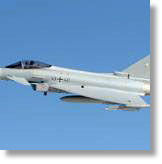
The German Luftwaffe was formed in 1956 as a result of West Germany becoming a member of the NATO pact. Western allies believed that Germany needed a strong air force to counter the threat of the Soviet Union and it’s Warsaw pact allies. Although the German Luftwaffe have less personnel and a lower budget than several other European nations, most notably the British Royal Air Force and the French, the Air Force of modern re-unified Germany maintains the largest number of fixed-wing combat aircraft in Europe today.
The majority of the fleet consists of the Eurofighter Typhoon, a highly agile aircraft designed to be particularly effective in dogfights. The Eurofighter Typhoon is also used by the British, Austrian, Italian and Saudi Arabian Air forces.
The majority of the fleet consists of the Eurofighter Typhoon, a highly agile aircraft designed to be particularly effective in dogfights. The Eurofighter Typhoon is also used by the British, Austrian, Italian and Saudi Arabian Air forces.
#9 - Republic of Korea Air Force - 450 Combat Aircraft
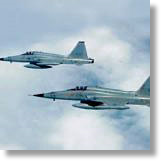
The South Korean Air Force, also known as the ROK Air Force maintains a strong aerial deterrent due to the aggressive posturing of its neighbor to the North. The ROK Air Force operates 450 combat aircraft that are almost exclusively designed in North America and NATO member states. The fleet is made up primarily of Northrop F-5 fighter jets, a relatively cheap multi-use aircraft capable of both air-to-air combat roles, and equally suitable as a ground attack platform. The South Koreans also maintain a number of F-16 Fighting Falcons and Boeing F-15 strike eagles. The ROK Air Force has contributed widely to the Global war on terror in recent years, performing in the Persian Gulf War and taking part in extensive peacekeeping missions, most notably in Somalia in 1993. The South Koreans operate an advanced early-warning system through extensive use of high technology drones that monitor North Korea around the clock. Due to this added layer of protection, South Korea is confident that their Northern neighbors pose no real threat to them in terms of air-power.
#8 - Turkish Air Force - 465 Combat Aircraft
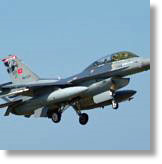
The Turkish Air Force is one of the oldest aerial warfare branches of any nation. It has a history stretching back to 1913 when it was founded by the Ottoman Empire, but the Turkish Air Force as it is known today was created in 1923 upon the formation of the republic of Turkey. In modern times Turkey has participated in NATO’s Operation Deliberate Force in Bosnia in 1995, and also continued to provide support in the area after the disintegration of former Yugoslavia, commonly providing F-16’s to assist in the policing of Baltic airspace at the time. Most recently the increased tension in Eastern Europe has led to Turkish aircraft being involved in several incidents involving Russian and Syrian forces. In November 2015 a Turkish F-16 engaged a Russian Su-24 Fencer that Turkey claimed had violated its airspace. Russia denied the incursion despite it’s long history of provocation in the region.
#7 - Pakistan Air Force - 522 Combat Aircraft
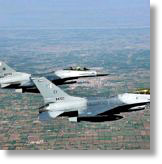
In 1933 the British colonial government of modern day Pakistan created the Royal Indian Air Force (RIAF) in Karachi. After World War two, in which the RIAF assisted in the defeat of Japan, Pakistan gained independence in 1947 and the Royal Pakistan Air Force was formed. After Pakistan became a republic in 1956 the Royal prefix was removed and the Pakistan Air Force (PAF) benefited from the US aid program by receiving 100 American built F-86 Sabres. The fleet has been involved in active combat several times since then, most frequently with neighboring Indian. The 1965 Indo-Pakistan war saw Pakistan claiming complete air superiority after just two days, even though the Indians disputed this. In recent times Pakistan has been at the forefront of the War on terror, and has taken part in many coalition counter-insurgency operations in Afghanistan against the Taliban.
#6 - Korean People’s Air Force - 691 Combat Aircraft
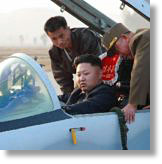
Secretive and volatile, North Korea maintains a large number of combat aircraft in the modern age, almost exclusively supplied by Russia and China. The country is one of the few to still operate the outdated MiG-17 and MiG-19 fighters, although it also has use of the far more modern and effective MiG-23 and MiG-29 fighter jets.
The nations bomber fleet is somewhat out-of-date too, relying mainly on obsolete Ilyushin II-28 Beagle bombers that are capable of providing a medium-range attack strategy. The US analysts GlobalSecurity.org assert that North Korea is capable of conducting limited air operations against South Korea and has a marginal capability for defending its own airspace.
The nations bomber fleet is somewhat out-of-date too, relying mainly on obsolete Ilyushin II-28 Beagle bombers that are capable of providing a medium-range attack strategy. The US analysts GlobalSecurity.org assert that North Korea is capable of conducting limited air operations against South Korea and has a marginal capability for defending its own airspace.
#5 - Egyptian Air Force - 900 Combat Aircraft
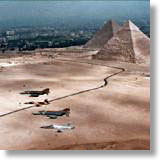
The Egyptian Air Force was formed in 1930 with just three trained pilots to its name, but by the time of World War Two it had received considerable assistance from the British and US air forces in the fight against Nazi Germany. In the 1948 Arab-Israeli war Egypt bombarded Tel Aviv and shot down two Israeli aircraft before attacking the British controlled RAF Ramat David airfield, mistakenly believing that it had been taken over by Israeli forces.
They returned a second time but this time the British were ready for them and the entire Egyptian force was shot down. In modern times Egypt has turned to Russia for assistance and new aircraft, and this year the nation bought 74 MiG-35 fighters in a deal with the soviets worth over $2 billion.
They returned a second time but this time the British were ready for them and the entire Egyptian force was shot down. In modern times Egypt has turned to Russia for assistance and new aircraft, and this year the nation bought 74 MiG-35 fighters in a deal with the soviets worth over $2 billion.
#4 - Indian Air Force - 1,100 Combat Aircraft
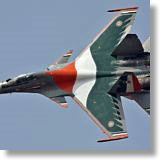
Since becoming a republic in 1950, India has been involved in four wars and countless border skirmishes with neighboring Pakistan, mainly due to the ongoing disagreement over the disputed territory of Kashmir. The Indian Air Forces primary fighter aircraft since 2002 has been the Russian built Sukhoi Su-30MKI, which incorporates Indian electronic systems and is customized for Indian use in particular.
The IAF also operate a variety of other aircraft, most notably the Mikoyan MiG-29, although it also utilizes the Mikoyan-Gurevich MiG-21 as an interceptor aircraft.
The IAF also operate a variety of other aircraft, most notably the Mikoyan MiG-29, although it also utilizes the Mikoyan-Gurevich MiG-21 as an interceptor aircraft.
#3 - People’s Liberation Army Air Force - 1,500 Combat Aircraft
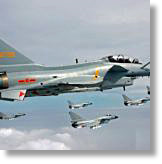
The People’s Liberation Army Air Force (PLAAF) was formed in 1949 with the aid of the Soviet Union, shortly after the People’s Republic of China was formed. The PLAAF took part in the Korean War using Soviet built Mig-15’s, and also received assistance from the Russians in training their pilots. In the 1980’s the Chinese air force suffered from serious technological problems and reorganized in order to become more effective.
An extensive program of Pilot training was established in order to increase pilot’s abilities and effectiveness in a combat theater. With the recent upsurge in China’s economic status the Chinese air fleet is continuing to modernize and the nation is also believed to be developing its own Stealth bomber, known as the H-18.
An extensive program of Pilot training was established in order to increase pilot’s abilities and effectiveness in a combat theater. With the recent upsurge in China’s economic status the Chinese air fleet is continuing to modernize and the nation is also believed to be developing its own Stealth bomber, known as the H-18.
#2 - Russian Air Force - 1,900 Combat Aircraft
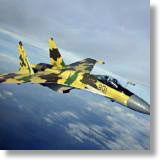
After the break up of the Soviet Union in 1991 the Russians suffered considerable economic hardship, with a corresponding decline in Airpower and morale. In the 1990’s some pilots were even forced to go on hunger strike in order to receive several months back-pay that was due to them. Despite these financial problems, the Russian Air force took part in the first Chechen war, that took place from 1994 to 1996, and the second Chechen War, from 1999 to 2002. The Russian Air force of today is considerably better equipped than a decade ago, with Sukhoi Su-35’s, Su-34’s and the Sukhoi PAK DA all in active service. In September 2015 the Russian Air Force, in collaboration with other branches of the Soviet military, launched a military operation in the Homs region of Syria that continues to this day.
#1 - United States Air Force - 3,318 Combat Aircraft
With heightened tensions around the World, and a possible resurgence of the Cold War on the horizon, its unsurprising, but extremely comforting to know that the United States stands alone as by far the biggest, best equipped and most technologically advanced nation in the World when it comes to aerial warfare capabilities. The United States Air Force is vast and overwhelming in terms of the assets at its disposal. The USAF’s fleet of F-16 Fighting Falcons number over 1,200, which would leave America at fourth place in this list with that one model alone, but that really is just the tip of the iceberg. The military budget of the USAF, founded in September 1947, is in excess of $161 billion annually, although black budget projects are likely to receive a budget in excess of other nations entire military budget. The history of the USAF is hard to summarize, such has been the impact of America and NATO on the free World post World War two.
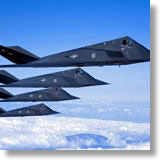
The American Fleet also contains hundreds of F-15 Strike Eagles, numerous F-22 Raptors and of course an array of strategic technologically advanced bombers, including the much-loved Boeing B-52 Stratofortress and of course the Northrop Grumman B-2 Sprit, or the Stealth Bomber as it is commonly known. The United States is also the only nation operating the incredibly well-armed Lockheed AC-130, of which there are more than 30 in the fleet.
The Gazette Review
The Gazette Review

From: David King, Bury St Edmunds, Suffolk
Subject: Memorable Trip
Not so much a Swan Song, rather a memorable trip that was arranged by FS Jim Cunningham, Air Movements, RAF Akrotiri. My return to Cyprus from a funeral in the UK was as the 9th crew member on a VC10. For the whole trip I was seated behind the Captain on the flight deck - a really memorable experience!
David King
Subject: Memorable Trip
Not so much a Swan Song, rather a memorable trip that was arranged by FS Jim Cunningham, Air Movements, RAF Akrotiri. My return to Cyprus from a funeral in the UK was as the 9th crew member on a VC10. For the whole trip I was seated behind the Captain on the flight deck - a really memorable experience!
David King
From: John Guy, Northampton
Subject: Swan Song
Hi Tony,
My Swan Song would have to be retrospective as I retired from the RAF 28 years ago. During my time as a Mover my various postings included Gulf MAMS, NEAF MAMS & UKMAMS, & during those postings I ever only had one task to Nairobi. We flew in, picked up a stretcher patient, & departed. Would you believe not even a night stop!
Whilst stationed at RAF Hereford, the Supply training was about to move to a unit in Lincolnshire. Our Flight Commander called us all into his office to notify us of our postings, "You are all posted with the School, but not you John, you are posted to RAF Eastleigh, Nairobi”.
Thus my 2nd overseas tour was a wonderful experience, given that I was still a Supplier, & this timed accompanied by my wife. What a posting for a relative newlywed (2 yrs). Naturally we were at the bottom of the married quarters list, & remained there for the whole of the tour. However, after a brief stay in an hotel, The Roy Sambu, we were accommodated in a brand new 6th floor flat, a hiring overlooking Nairobi & the Governor's Residence.
At our ages I fear that my wife & I would be unable to thoroughly enjoy another visit, but we can still dream!
Regards,
John
Subject: Swan Song
Hi Tony,
My Swan Song would have to be retrospective as I retired from the RAF 28 years ago. During my time as a Mover my various postings included Gulf MAMS, NEAF MAMS & UKMAMS, & during those postings I ever only had one task to Nairobi. We flew in, picked up a stretcher patient, & departed. Would you believe not even a night stop!
Whilst stationed at RAF Hereford, the Supply training was about to move to a unit in Lincolnshire. Our Flight Commander called us all into his office to notify us of our postings, "You are all posted with the School, but not you John, you are posted to RAF Eastleigh, Nairobi”.
Thus my 2nd overseas tour was a wonderful experience, given that I was still a Supplier, & this timed accompanied by my wife. What a posting for a relative newlywed (2 yrs). Naturally we were at the bottom of the married quarters list, & remained there for the whole of the tour. However, after a brief stay in an hotel, The Roy Sambu, we were accommodated in a brand new 6th floor flat, a hiring overlooking Nairobi & the Governor's Residence.
At our ages I fear that my wife & I would be unable to thoroughly enjoy another visit, but we can still dream!
Regards,
John
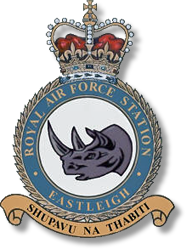
Fur seal flight could be first of many
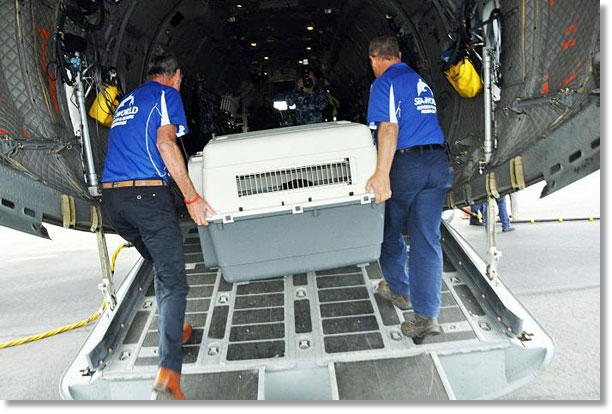
Sea World hopes the flight of four rescued and recuperated seal pups to a thriving colony on the NSW south coast will be the first of many.
Two male and two female New Zealand fur seal pups were flown from the Gold Coast theme park to a nature reserve on Montague Island by a Royal Australian Air Force aircraft late last week. The successful flight in the RAAF C-27J Spartan came after five years of similar failed attempts for rescued seals who had previously been forced to stay at the park due to NSW regulations.
However advancements in veterinary care and guarantees over the health of the animals meant they were able to be released into the colony.
"We do have two animals out of the four with tracking devices so we can monitor this release, because we ourselves want to understand if we can continue to do it," Sea World director of marine sciences Trevor Long said.
Warmer conditions, along with a lack of natural food for the pups, mean it's unlikely they would survive if released back into Queensland waters.
Two male and two female New Zealand fur seal pups were flown from the Gold Coast theme park to a nature reserve on Montague Island by a Royal Australian Air Force aircraft late last week. The successful flight in the RAAF C-27J Spartan came after five years of similar failed attempts for rescued seals who had previously been forced to stay at the park due to NSW regulations.
However advancements in veterinary care and guarantees over the health of the animals meant they were able to be released into the colony.
"We do have two animals out of the four with tracking devices so we can monitor this release, because we ourselves want to understand if we can continue to do it," Sea World director of marine sciences Trevor Long said.
Warmer conditions, along with a lack of natural food for the pups, mean it's unlikely they would survive if released back into Queensland waters.
The seals were among a pod of 14 eight-month-olds being nursed back to health at the theme park after they washed up on Queensland beaches in an unhealthy or injured state. However only some survived the first few days of their rehabilitation, and the extent of the injured meant others had to be euthanised. They required around-the-clock care in the early stages of their recovery. "Whilst four doesn't sound like a lot out of 14, these animals were very malnourished, some had shark injuries and some were in a very poor state," Long said. "So we're very pleased to be able to get the four back down there."
They'll now be monitored to understand the effectiveness of rehabilitation program for the non-endangered species. "If we do see these types of numbers next year we will be looking to do similar types of situations to try and release as many as we can back to the environment," Long said.
Au.news.yahoo.com Click here to watch video
They'll now be monitored to understand the effectiveness of rehabilitation program for the non-endangered species. "If we do see these types of numbers next year we will be looking to do similar types of situations to try and release as many as we can back to the environment," Long said.
Au.news.yahoo.com Click here to watch video
Fur seal flight could be first of many
From: John Holloway, Shrewsbury
Subject: NSRAFA Cosford Branch
Hi Tony,
Our speaker on this month was Brian Holland, a former Rolls Royce Aero Engine designer, who gave us an informative illustrated talk about the development and working of aircraft engines. However, his main talk was on the powerful turbofan jet engines of today's jet airliners.
He spoke of the international regulations put in place to ensure that twin-engined aircraft can make a landfall in the event of an engine failure. The regulation, known as Extended Twin Engined Op Performance (ETOPS), called for a duration of 60 minutes on one engine then was extended to 180 minutes and is now up to 220 minutes. For example, the twin engine Airbus A350 will now be able to fly the same routes as the A380, which as you know is a four engined aircraft, and sales of the A350 will probably overtake it.
I remember at Mauripur a Hastings would arrive from Negombo but for the next leg of its flight to Habbaniya would need extra fuel. Sometimes the aircraft would be at maximum all up weight already so the pilot would be informed of this and he would tell us to "lose" some items off the trim sheet. The first thing that went was the water and some items of freight. This meant that the kite was at least 2,000 lbs overweight (82,000 instead of 80,000 lbs for example). Should the pilot not want this then some items had to be physically unloaded, maybe lads on their way home! The extra fuel ensured that if there was a problem when they arrived over Habb then there was enough to get them back to Shaibah.
Incidently I can't recall any of our "youngsters" mentioning weight and balance in previous Briefs or don't they have to do that now?
Subject: NSRAFA Cosford Branch
Hi Tony,
Our speaker on this month was Brian Holland, a former Rolls Royce Aero Engine designer, who gave us an informative illustrated talk about the development and working of aircraft engines. However, his main talk was on the powerful turbofan jet engines of today's jet airliners.
He spoke of the international regulations put in place to ensure that twin-engined aircraft can make a landfall in the event of an engine failure. The regulation, known as Extended Twin Engined Op Performance (ETOPS), called for a duration of 60 minutes on one engine then was extended to 180 minutes and is now up to 220 minutes. For example, the twin engine Airbus A350 will now be able to fly the same routes as the A380, which as you know is a four engined aircraft, and sales of the A350 will probably overtake it.
I remember at Mauripur a Hastings would arrive from Negombo but for the next leg of its flight to Habbaniya would need extra fuel. Sometimes the aircraft would be at maximum all up weight already so the pilot would be informed of this and he would tell us to "lose" some items off the trim sheet. The first thing that went was the water and some items of freight. This meant that the kite was at least 2,000 lbs overweight (82,000 instead of 80,000 lbs for example). Should the pilot not want this then some items had to be physically unloaded, maybe lads on their way home! The extra fuel ensured that if there was a problem when they arrived over Habb then there was enough to get them back to Shaibah.
Incidently I can't recall any of our "youngsters" mentioning weight and balance in previous Briefs or don't they have to do that now?
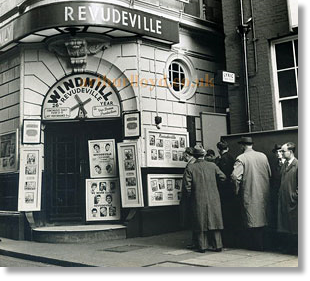
The video in last month's Brief of the Union Jack Club in London got the old grey matter going. My last six months in the RAF were at Lyneham in 1957, and some weekends we took a trip down to the "smoke" and stayed at the club.
It's altered a lot since those days. Back then, on arrival, the booking in at the reception was at a small hatch where you would be allocated a cubicle which had just six foot high walls separating it from the next one.
Saturday evenings would usually be spent at the Windmill Theatre in Soho where oftentimes the only seats available were at the back. As the seats in front were vacated we would quickly move forward before anybody else until we got to the front row. I do remember seeing Frankie Vaughan (Green Door) and Bruce Forsyth.
Cheers,
John
It's altered a lot since those days. Back then, on arrival, the booking in at the reception was at a small hatch where you would be allocated a cubicle which had just six foot high walls separating it from the next one.
Saturday evenings would usually be spent at the Windmill Theatre in Soho where oftentimes the only seats available were at the back. As the seats in front were vacated we would quickly move forward before anybody else until we got to the front row. I do remember seeing Frankie Vaughan (Green Door) and Bruce Forsyth.
Cheers,
John
From: Arthur Rowland, St Ives, Cambs
Subject: Swan Song
Hi Tony,
Not exactly my Swan Song, but one for RAF Middleton St George, now Tees side Airport. Our task was to ship the balance of what remained at Middleton to RAF Coltishall. Six Beverley loads over two days.
All went well, and when the last of the three Beverleys was loaded, the Captain said to me, now lets do the job properly. Invited to the flight deck, the three big birds (they were big then) took off, lined up and we did a farewell fly past in formation. A fitting tribute, I think.
Looking at my log book that took place on the 15 April 1964, over half a century ago!
Keep well,
Arthur
Subject: Swan Song
Hi Tony,
Not exactly my Swan Song, but one for RAF Middleton St George, now Tees side Airport. Our task was to ship the balance of what remained at Middleton to RAF Coltishall. Six Beverley loads over two days.
All went well, and when the last of the three Beverleys was loaded, the Captain said to me, now lets do the job properly. Invited to the flight deck, the three big birds (they were big then) took off, lined up and we did a farewell fly past in formation. A fitting tribute, I think.
Looking at my log book that took place on the 15 April 1964, over half a century ago!
Keep well,
Arthur
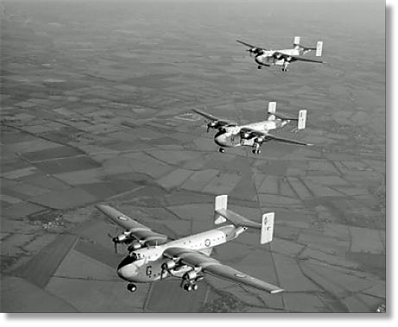
From: Bob Dixon, Royal Wootton Bassett
Subject: RAF Movers - deceased
Hi Tony,
I am attending the annual Movements Officers reunion in the RAF Club in early November and the young Flt Lt doing the admin for it has asked me if I know who has died over the last 12-18 months so we can include them in the list of those no longer with us at that reunion.
I am aware that Wg Cdr Vic King has died recently and Sqn Ldr Norrie Radcliffe passed on a few months ago. Can you help with names of other commissioned officers of the RAF who have departed for the great runway above?
Wishing you all the best
Bob
R (Bob) Dixon
Group Captain (Retired)
(If anyone can help Bob with names, please e-mail him here)
Subject: RAF Movers - deceased
Hi Tony,
I am attending the annual Movements Officers reunion in the RAF Club in early November and the young Flt Lt doing the admin for it has asked me if I know who has died over the last 12-18 months so we can include them in the list of those no longer with us at that reunion.
I am aware that Wg Cdr Vic King has died recently and Sqn Ldr Norrie Radcliffe passed on a few months ago. Can you help with names of other commissioned officers of the RAF who have departed for the great runway above?
Wishing you all the best
Bob
R (Bob) Dixon
Group Captain (Retired)
(If anyone can help Bob with names, please e-mail him here)
From: Howard Firth, Cranwell Village,
Subject: REQUEST FOR INFORMATION - RAF AKROTIRI
Hi Tony,
I hope that you are well. I am in contact with Wg Cdr Steve Chappell, OC Logistics, RAF Akrotiri BFPO 57 who is searching for recollections and memorabilia from those who served there, period 1955-2015. In particular, Air Movements related info and photos.
Can you please publish this request in the Newsletter.
Warm regards
“H” Firth
(If anyone would like to contribute with stories and photos, e-mail Steve here)
Subject: REQUEST FOR INFORMATION - RAF AKROTIRI
Hi Tony,
I hope that you are well. I am in contact with Wg Cdr Steve Chappell, OC Logistics, RAF Akrotiri BFPO 57 who is searching for recollections and memorabilia from those who served there, period 1955-2015. In particular, Air Movements related info and photos.
Can you please publish this request in the Newsletter.
Warm regards
“H” Firth
(If anyone would like to contribute with stories and photos, e-mail Steve here)
From: John Holloway, Shrewsbury
Subject: Swan Song
Hi Tony,
My last RAF memorable flight was my trip home from Aden on 20th January 1957 in a Comet 2. The route we took was via Entebbe, Kano and Idris.
We caught up with a Hermes trooper at Kano that left Aden the day before us and we arrived in the UK the day before it; now that’s moving!
Happy days!
John
Subject: Swan Song
Hi Tony,
My last RAF memorable flight was my trip home from Aden on 20th January 1957 in a Comet 2. The route we took was via Entebbe, Kano and Idris.
We caught up with a Hermes trooper at Kano that left Aden the day before us and we arrived in the UK the day before it; now that’s moving!
Happy days!
John
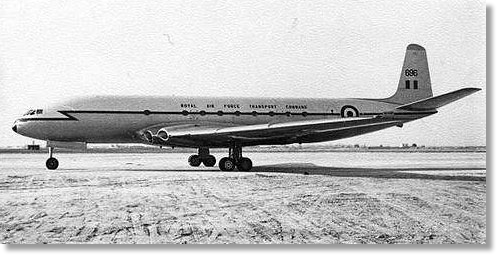
From: Neil Middleton, Ipswich, Suffolk
Subject: Swan Song
Hi Tony,
My Swan Song from NEAF MAMS was a complete surprise. On the 1st of March 1973, I was sent down to Masirah to help out Masirah Movements for a few days. The few days turned out to be 11 - I kept getting told someone would come and replace me. On the 10th a Herc arrived with the rest of the team to do the Seeb/Bait shuttle. Next morning away we went and got the job done. When we returned to Masirah I was handed a suitcase and told it was clean clothes because we were taking off next day for Singapore.
We had a night stop in Gan where we all went to the golf course and I played my first game of golf ever. Well ,just 2 holes because by the end of the second hole I had lost the 6 balls I had bought to play with!
We then flew on to Tengah where we had two fantastic days in Singapore exploring most of the delights it had to offer. We then headed back to Akrotiri via Masirah. By the way, somewhere in the Indian Ocean there is a panel that came off of XV301.
Because the powers to be had decreed that my career path would be in Supply, that was not only my Swan Song from NEAF MAMS but also from the Air Movements Trade; two months later I flew to the UK back into the Supply
world.
Regards
Neil
Subject: Swan Song
Hi Tony,
My Swan Song from NEAF MAMS was a complete surprise. On the 1st of March 1973, I was sent down to Masirah to help out Masirah Movements for a few days. The few days turned out to be 11 - I kept getting told someone would come and replace me. On the 10th a Herc arrived with the rest of the team to do the Seeb/Bait shuttle. Next morning away we went and got the job done. When we returned to Masirah I was handed a suitcase and told it was clean clothes because we were taking off next day for Singapore.
We had a night stop in Gan where we all went to the golf course and I played my first game of golf ever. Well ,just 2 holes because by the end of the second hole I had lost the 6 balls I had bought to play with!
We then flew on to Tengah where we had two fantastic days in Singapore exploring most of the delights it had to offer. We then headed back to Akrotiri via Masirah. By the way, somewhere in the Indian Ocean there is a panel that came off of XV301.
Because the powers to be had decreed that my career path would be in Supply, that was not only my Swan Song from NEAF MAMS but also from the Air Movements Trade; two months later I flew to the UK back into the Supply
world.
Regards
Neil
From: David Stevens, Bangor
Subject: Swan Song/Interesting Trip
Hi Tony,
No swan song flight as such, but...
Back in September 1972 I was Staff Officer (Movements) to the Inspector of Air Transport Services. Yeh what?! Yes, we really did have one of these for a short time. In fact, I was the only one and the job lasted barely a year.
My great regret is that I did not manage a 'Global' - round the world trip - while I was in the job. But, I did manage one great trip to the Far East.
In September 1972 I was appointed Escort/Protocol Officer for a Government Inter-Party Parliamentary Delegation to China. I think Lord Chalfont, then Minister of Defence, was head of delegation. I was a bachelor at the time.
The trip, faithfully recorded in my log book, went like this: Brize Norton - Akrotiri - Gan - Kai Tak (3 days shopping and generally relaxing!) - Tengah - Gan (2 days sailing) - Tengah - Kai Tak - Gan - Akrotiri - Brize Norton. I was away 14 days, total flying time 54 hours & 40 mins and airborne on average for some 5 hours a day.
Sadly, I did not get into China, military personnel were not welcome! But I did get up to the border and I had a most interesting view looking into China from an observation post. I also managed a couple of trips round the colony in an RAF Wessex.
I could never fathom out why the job was disestablished so quickly!
Regards,
David Stevens
Subject: Swan Song/Interesting Trip
Hi Tony,
No swan song flight as such, but...
Back in September 1972 I was Staff Officer (Movements) to the Inspector of Air Transport Services. Yeh what?! Yes, we really did have one of these for a short time. In fact, I was the only one and the job lasted barely a year.
My great regret is that I did not manage a 'Global' - round the world trip - while I was in the job. But, I did manage one great trip to the Far East.
In September 1972 I was appointed Escort/Protocol Officer for a Government Inter-Party Parliamentary Delegation to China. I think Lord Chalfont, then Minister of Defence, was head of delegation. I was a bachelor at the time.
The trip, faithfully recorded in my log book, went like this: Brize Norton - Akrotiri - Gan - Kai Tak (3 days shopping and generally relaxing!) - Tengah - Gan (2 days sailing) - Tengah - Kai Tak - Gan - Akrotiri - Brize Norton. I was away 14 days, total flying time 54 hours & 40 mins and airborne on average for some 5 hours a day.
Sadly, I did not get into China, military personnel were not welcome! But I did get up to the border and I had a most interesting view looking into China from an observation post. I also managed a couple of trips round the colony in an RAF Wessex.
I could never fathom out why the job was disestablished so quickly!
Regards,
David Stevens
From: Paul Newman, Newmarket
Subject: Heavylift Belfast
Hi Tony,
Subject: Heavylift Belfast
Hi Tony,
Further to the pics of poor old 'FT at Cairns I thought I would share these of her in the "real" Heavylift Cargo Airlines colours. Taken in August 2000 we had just delivered a Learjet fuselage to Wichita Kansas from, of course, Belfast.
I believe I have the honour of being the last Mover to operate the Belfast as the Loadmaster. My log book shows that I moved an RB211 from East Midlands to Prestwick on 21 June 2002. Heavylift then went bust in September of that year prior to 'FT disappearing to Oz.
Thinking about it I have an association of nearly 30 years with XR365 Hector/G-HLFT, and remember being part of a team loading her in '73 at Brize and then leading a team in '82 doing the overnight load for Heavylift to trundle off to Ascension. Then to join Heavylift in '95 and have the privelege of operating both 'FT and G-BEPS (Originally XR368 "Theseus") will always bring back fond memories.
Who can forget the lightweight toe ramps, quick fitting roller system and of course the easily carried and fitted hydraulic support struts (who broke the foot pump?).
I believe I have the honour of being the last Mover to operate the Belfast as the Loadmaster. My log book shows that I moved an RB211 from East Midlands to Prestwick on 21 June 2002. Heavylift then went bust in September of that year prior to 'FT disappearing to Oz.
Thinking about it I have an association of nearly 30 years with XR365 Hector/G-HLFT, and remember being part of a team loading her in '73 at Brize and then leading a team in '82 doing the overnight load for Heavylift to trundle off to Ascension. Then to join Heavylift in '95 and have the privelege of operating both 'FT and G-BEPS (Originally XR368 "Theseus") will always bring back fond memories.
Who can forget the lightweight toe ramps, quick fitting roller system and of course the easily carried and fitted hydraulic support struts (who broke the foot pump?).
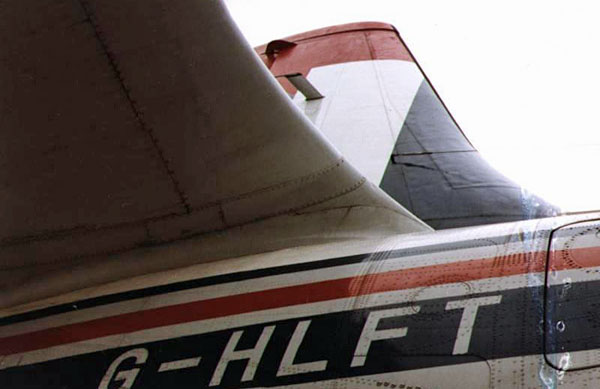
All the best
Paul Newman
Paul Newman
From: Len Bowen, Chisholm, ACT
Subject: Swan Song
G'day Tony,
Thought it was about time I burst into print again. Just a short one this time, and not particularly stimulating, but as my last Bev task it was a significant milestone.
Swan Song for the Blackburn Beverley, queen of the skys, was the focus of most of my early days in Air Movements, but all good things must come to an end. By the end of 1967, the Far East Air Force Beverleys of No 34 Squadron were being replaced by the C130Ks of No 48 Squadron. My last Beverley flight flight was on 7 December 1967, when my FEAF MAMS Team and I picked up a load of used Pressed Steel Planking (PSP) from Kuantan.
The PSP was urgently required to make up dispersals for the newly-arrived Andovers at some of the Tactical Training strips in Malaysia. The Andover C2 had a kneeling undercarriage, and while this worked OK in UK and Europe, the kneeling mechanism didn't like dust, heat and humidity. It would kneel all right, but then refuse to un-kneel. At one stage half the new Andover force was spread out over southern Malaysia, squatting undignifiedly at the edge of various airstrips.
I recall the PSP being one of the filthiest loading jobs we ever did, as it had been spread on Kuantan airfield for at least 20 years, and was muddy, rusty and infested with ants, spiders and the occasional scorpion. The planks were twisted and bent, and wouldn’t stack straight, so to obtain adequate load restraint, we had to thread each sheet into three tie-down chains. Flying time to and from Kuantan was quite short, but the actual loading took us most of the day, and so back to Seletar and Beverley heaven.
All that remained was a study in vandalism, as an army of local scrap dealers dismembered the Beverley carcasses by hand, right outside the MAMS office windows. The old girls still had one bite left, as one day I watched a small Chinese gentleman hack-sawing though the main spar inboard of where he was squatting on the wing, out beyond what was left of No 4 engine mounting. At first I couldn't believe it - the old joke of sitting on the branch you are sawing off - but sure enough there he was. I called all the rest of the blokes in the building to watch, and we started placing bets on how long before the inevitable happened. And happen we knew it would, because only the day before we had watched other 'scrappies' cutting through the front and rear spars, from the under side of the wing!
It only took a few minutes until tired aluminium skin and severed spars succumbed to the force of gravity. Fortunately for our saw-wielding vandal the wing did not drop clear, but rather hinged slowly along the cuts, and, acting rather like a king-size child's playground slide, deposited the workman unceremoniously onto the tarmac. The wing-tip didn't quite reach the ground, so he actually did drop about six feet when he reached the end of his slide. He appeared bruised and shaken, but otherwise unhurt, as his gesticulating and jabbering workmates helped him to his feet. Secretly, I had hoped that the whole outer wing would drop suddenly like a gallows trap-door - and with similar results. I know he was just doing his job, but ...
Regards to all and keep up your great work,
Len Bowen
Subject: Swan Song
G'day Tony,
Thought it was about time I burst into print again. Just a short one this time, and not particularly stimulating, but as my last Bev task it was a significant milestone.
Swan Song for the Blackburn Beverley, queen of the skys, was the focus of most of my early days in Air Movements, but all good things must come to an end. By the end of 1967, the Far East Air Force Beverleys of No 34 Squadron were being replaced by the C130Ks of No 48 Squadron. My last Beverley flight flight was on 7 December 1967, when my FEAF MAMS Team and I picked up a load of used Pressed Steel Planking (PSP) from Kuantan.
The PSP was urgently required to make up dispersals for the newly-arrived Andovers at some of the Tactical Training strips in Malaysia. The Andover C2 had a kneeling undercarriage, and while this worked OK in UK and Europe, the kneeling mechanism didn't like dust, heat and humidity. It would kneel all right, but then refuse to un-kneel. At one stage half the new Andover force was spread out over southern Malaysia, squatting undignifiedly at the edge of various airstrips.
I recall the PSP being one of the filthiest loading jobs we ever did, as it had been spread on Kuantan airfield for at least 20 years, and was muddy, rusty and infested with ants, spiders and the occasional scorpion. The planks were twisted and bent, and wouldn’t stack straight, so to obtain adequate load restraint, we had to thread each sheet into three tie-down chains. Flying time to and from Kuantan was quite short, but the actual loading took us most of the day, and so back to Seletar and Beverley heaven.
All that remained was a study in vandalism, as an army of local scrap dealers dismembered the Beverley carcasses by hand, right outside the MAMS office windows. The old girls still had one bite left, as one day I watched a small Chinese gentleman hack-sawing though the main spar inboard of where he was squatting on the wing, out beyond what was left of No 4 engine mounting. At first I couldn't believe it - the old joke of sitting on the branch you are sawing off - but sure enough there he was. I called all the rest of the blokes in the building to watch, and we started placing bets on how long before the inevitable happened. And happen we knew it would, because only the day before we had watched other 'scrappies' cutting through the front and rear spars, from the under side of the wing!
It only took a few minutes until tired aluminium skin and severed spars succumbed to the force of gravity. Fortunately for our saw-wielding vandal the wing did not drop clear, but rather hinged slowly along the cuts, and, acting rather like a king-size child's playground slide, deposited the workman unceremoniously onto the tarmac. The wing-tip didn't quite reach the ground, so he actually did drop about six feet when he reached the end of his slide. He appeared bruised and shaken, but otherwise unhurt, as his gesticulating and jabbering workmates helped him to his feet. Secretly, I had hoped that the whole outer wing would drop suddenly like a gallows trap-door - and with similar results. I know he was just doing his job, but ...
Regards to all and keep up your great work,
Len Bowen
This issue is dedicated
to the memories of:
Dave Bickford RCAF
John Rowe RAAF
Vic King RAF
to the memories of:
Dave Bickford RCAF
John Rowe RAAF
Vic King RAF
Tony Gale
ukmamsoba@gmail.com
ukmamsoba@gmail.com










